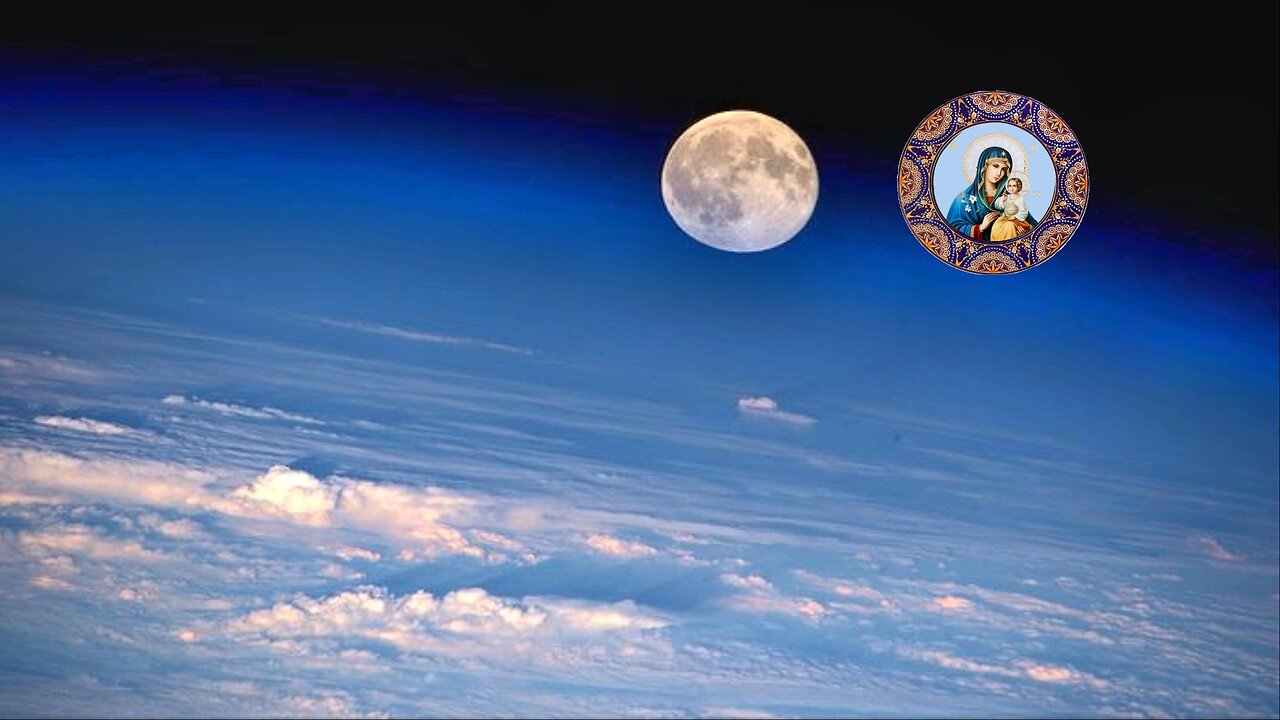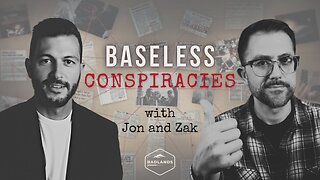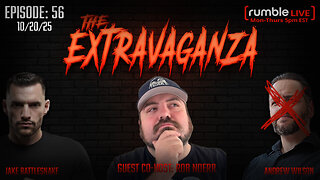Premium Only Content

On Saturday, August 9th. 2025, I Was Lucky to See an Apparition of Virgin Mary on the Full Moon
🌕 The word “August” brings two things to the Orthodox Christian mind, one of them being the Moon. The other one is the Dormition (Assumption) of the Mother of God, one of the great feasts of the Eastern and Oriental Orthodox Churches that takes place in August, 15/ 22.
Though it might be easy to reject lunar lore as mere superstition, we cannot deny that the moon captures our imagination.
The Moon is associated with the three greatest mysteries of life: birth, love and death. The moon “is born” and “dies” again each month, following a never-ending cycle: waxing, full moon, and waning. For a night it completely disappears from the sky and then it pops up again in the form of a thin crescent.
❖[Revelation 12:1]❖
“And a great sign appeared in heaven: a woman clothed with the sun, with the moon under her feet, and on her head a crown of twelve stars."
The moon under her feet represents her dominion and victory over her enemies. Then finally clothed with the sun. This is an important woman! This is the Queen of Heaven!
♰ Orthodox Feast Day Context
🧕 The Feast of the Dormition:
August 15th marks the Dormition, or "falling asleep," of the Virgin Mary, a major feast in the Orthodox Church.
🌕 August Moon:
The month of August brings to mind both the moon and the Dormition, creating a timely opportunity for contemplation of Mary's spiritual significance and the contrast between the temporary full moon and her eternal nature.
In the Orthodox tradition, the "The full Moon" is a spiritual symbol representing the Mother of God's grace and glory, often invoked in relation to the Feast of the Dormition on August 15th / 22nd , when her radiant "light knows no decay" unlike a waning moon. This imagery connects to biblical descriptions of the "woman clothed with the sun" standing on the moon, symbolizing her queenship and victory, and highlights the contrast between the temporary nature of the moon and the eternal fullness of Mary's grace and glory.
The term “Dormition” (Greek Koímēsis or Kimisis, “falling asleep”) is used instead of the word “death.” The Catholics prefer to call it “the Assumption of Mary.”
Perhaps Mary appears reborn or resurrected after her death because archetypal figures cannot really die. Even if that happens, their death does not last for long. You see, the moon insists on traveling endlessly in its celestial cycles. Much like Mary, it temporarily “dies” only to make a powerful comeback in our lives...
As the moon at its full she shines. The blessed Mary is said to be the full moon, because in every way perfect. The moon is imperfect when a half-moon, because it is stained or horned. But the glorious Virgin neither in Her birth had any stain, because sanctified in Her mother's womb, guarded by angels, nor in Her days had She the horns of pride. Hence, She shone fully and perfectly. She is said to be light because She dispels the darkness.
🌕 The Moon is a holy place, an Orthodox place.
But not everyone knows that there are places on the moon named after Orthodox saints.
The modern system of naming lunar craters, "seas" (dark lowlands), and mountain ranges dates to 1651, when the Jesuit astronomers Giovanni Battista Riccioli and Francesco Maria Grimaldi published a detailed map of the Moon based on telescopic observation. Riccioli was responsible for naming the topographic features; perhaps surprisingly, he mostly avoided religious references. The "seas" he gave allegorical or poetic names such as "Sea of Tranquility"; the craters he named for famous astronomers. Riccioli's overall system has been maintained to this day, although explorers, aviation pioneers, and cosmonauts joined astronomers as approved eponyms for craters. Official lunar terminology is currently regulated by the International Astronomical Union (IAU), a very strict and conservative bureaucratic organization fond of secular history and ancient mythology, but with a strong bias against "living" religions, especially Christianity.
Given this history, it is perhaps surprising that there are any lunar features named for Orthodox saints, but in fact there are six. Three of them are named for pre-Schism Western saints, and three for saints of the East. Although this symmetry was not intended by the selenographers, it may perhaps be considered providential.
There are in fact craters named "Mary" and "Donna", the latter being a form of "Madonna".
👉 Continue reading...
https://orthochristian.com/122645.html
-
 6:00
6:00
China Uncensored
1 day agoWar With China Is Coming
14.5K48 -
 40:45
40:45
Jasmin Laine
15 hours ago“If You Have a Problem, I Don’t Care”—Jamil Jivani OBLITERATES the Woke Regime
3.13K11 -
 1:04:51
1:04:51
MTNTOUGH Podcast w/ Dustin Diefenderfer
20 hours agoJustin Wren: From MMA to Congo, The Wild Story Behind His Vanishing Act | MTNPOD #138
3.71K -
 7:47
7:47
The Shannon Joy Show
13 hours agoRepublicans need to WAKE UP... feat. Maria Zeee
3.41K5 -
 4:28
4:28
DropItLikeItsScott
13 hours agoI Tried To Break The STOPBOX Here's What Happened!
3.32K1 -
 21:16
21:16
Actual Justice Warrior
14 hours agoMedia CALLS OUT Chicago Mayor's LIES
21.4K5 -
 31:38
31:38
daniellesmithab
3 days agoAlberta Update: Potential Pipeline for Alberta
14K4 -
 33:38
33:38
Stephen Gardner
15 hours ago🔥Democrats just SCREWED themselves in SHUTDOWN Trap!!
88.7K32 -
 1:41:32
1:41:32
Badlands Media
16 hours agoBaseless Conspiracies Ep. 155: Robotheism
36K56 -
 1:03:40
1:03:40
TheCrucible
14 hours agoThe Extravaganza! EP: 56 with Geust co-host Rob Noerr (10/20/25)
169K21